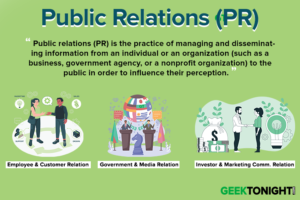What Is DAGMAR?
DAGMAR (Defining Advertising Goals for Measured Advertising Results) is a model, involve 52 task for advertising task for setting advertising objectives and measuring the result of an ad campaign.
The DAGMAR Approach was introduced by Russell H. Colley (1961) in a report for the Association of National Advertisers.
Table of Content
According to this model, communications effects are the logical basis for setting advertising objectives and goals against which result should be measured.
In Colley’s words:
“Advertising’s job, purely and simply, is to communicate to defined audience information and a frame of mind that stimulates actions. Advertising succeeds or fails depends on how well it communicate the desired information and attitudes to the right people at the right time and at the right cost”
Russell H. Colley
DAGMAR Model
DAGMAR is much more than a model for designing an advertisement, it is used to monitor and evaluate promotion campaigns. There are three parts to the DAGMAR advertising model.
- Step One: Defining Advertising Goals
- Step Two: Awareness, Comprehension, Conviction and Action
- Step Three: Measure Advertising Effectiveness
Step One: Defining Advertising Goals
It is important to understand that DAGMAR is aimed at setting advertising goals and not more general marketing goals. Elements of a good advertising goal include being a written, measurable task involving a starting point, a defined audience, and a time limit.
To measure the effectiveness of advertising, a business must know the current state before advertising starts and then the new state after the campaign has finished. This means surveying the target audience to measure current awareness, comprehension and conviction. This helps to establish realistic goals for the campaign.
For example, to increase product awareness from 10% to 35%.
Step Two: Awareness, Comprehension, Conviction and Action
The second part of the DAGMAR model attempts to explain the process customers go through before they buy a product. The process is as follows:
Awareness
Involves making target audience aware of the existence of brand or company.
Comprehension
The purpose is to develop an understanding among audience of what the product is and what it would do for them.
Conviction
The objective is to create a mental disposition among target audience members to buy the product.
Action
To motivate the target audience to purchase the product or services.
Step Three: Measure Advertising Effectiveness
In step one of the DAGMAR advertising model, goals were established for the campaign. The final step is to measure the results and effectiveness of the campaign by evaluating whether the goals were met or not.
This may require another survey to measure awareness comprehension and conviction levels. Advertising can be an important part of marketing for small business and understanding advertising models such as Awareness, Interest, Desire and Action (AIDA) and DAGMAR can help improve marketing effectiveness.
DAGMAR Objective
Another important contribution of DAGMAR was its ability to clarify what constitutes a good objective. According to Colley, the objectives should have the following features or characteristics:
- Stated in terms of concrete (specific) and measurable communications task; in terms of strengthening brand image, maximize brand presence, maximize the market share, increase the sale.
- Specify a target audience, means well-defined target audience.
- Indicate a benchmark or standard starting point and the degree of change sought(seek)
- Specify a time period for accomplishing the objective or objectives.
There are no significant difference between Colley’s proposed model and other important hierarchy-of-effects models.
Assessment and Criticism of DAGMAR Approach
The DAGMAR approach has had an enormous influence on the advertising planning process and objective setting. It focused the advertiser’s attention on the importance and value of using communications-based objectives as against sales-based objectives to measure the impact and success of an ad campaign.
The approach has not been totally accepted by everyone in the advertising field. A number of questions have been raised concerning its value as an advertising planning tool.
- Problems with Response Hierarchy: DAGMAR approach is based on hierarchy of effects model and the fact that consumer do not always follow the sequence of communications effects leading to purchase.
- Sales as the Advertising Goal: Many believe that sales is the only relevant measure of advertising objectives and shown little respect and tolerance for ad campaigns that otherwise may achieve communications objectives but fail to increase sales.
- Practicality and Costs: Implementation of the DAGMAR approach is difficult. Expensive research required to establish quantitative standards and measure changes in the response hierarchy. Some critics point out that DAGMAR is practical only for large firms with substantial research and advertising budget.
- Inhibits Creativity: The DAGMAR approach is basically a planned and rational approach to setting advertising objectives. It imposes too much structure and may restrict creativity.
Marketing Management Topics
Go On, Share & Tell Us What You Think!
Did we miss something in Marketing Management Tutorial or You want something More? Come on! Tell us what you think about our post on DAGMAR Approach in the comments section and Share this post with your friends.
Marketing Management
(Click on Topic to Read)
- What Is Market Segmentation?
- What Is Marketing Mix?
- Marketing Concept
- Marketing Management Process
- What Is Marketing Environment?
- What Is Consumer Behaviour?
- Business Buyer Behaviour
- Demand Forecasting
- 7 Stages Of New Product Development
- Methods Of Pricing
- What Is Public Relations?
- What Is Marketing Management?
- What Is Sales Promotion?
- Types Of Sales Promotion
- Techniques Of Sales Promotion
- What Is Personal Selling?
- What Is Advertising?
- Market Entry Strategy
- What Is Marketing Planning?
- Segmentation Targeting And Positioning
- Brand Building Process
- Kotler Five Product Level Model
- Classification Of Products
- Types Of Logistics
- What Is Consumer Research?
- What Is DAGMAR?
- Consumer Behaviour Models
- What Is Green Marketing?
- What Is Electronic Commerce?
- Agricultural Cooperative Marketing
- What Is Marketing Control?
- What Is Marketing Communication?
- What Is Pricing?
- Models Of Communication
Sales Management
- What is Sales Management?
- Objectives of Sales Management
- Responsibilities and Skills of Sales Manager
- Theories of Personal Selling
- What is Sales Forecasting?
- Methods of Sales Forecasting
- Purpose of Sales Budgeting
- Methods of Sales Budgeting
- Types of Sales Budgeting
- Sales Budgeting Process
- What is Sales Quotas?
- What is Selling by Objectives (SBO)?
- What is Sales Organisation?
- Types of Sales Force Structure
- Recruiting and Selecting Sales Personnel
- Training and Development of Salesforce
- Compensating the Sales Force
- Time and Territory Management
- What Is Logistics?
- What Is Logistics System?
- Technologies in Logistics
- What Is Distribution Management?
- What Is Marketing Intermediaries?
- Conventional Distribution System
- Functions of Distribution Channels
- What is Channel Design?
- Types of Wholesalers and Retailers
- What is Vertical Marketing Systems?
Marketing Essentials
- What is Marketing?
- What is A BCG Matrix?
- 5 M'S Of Advertising
- What is Direct Marketing?
- Marketing Mix For Services
- What Market Intelligence System?
- What is Trade Union?
- What Is International Marketing?
- World Trade Organization (WTO)
- What is International Marketing Research?
- What is Exporting?
- What is Licensing?
- What is Franchising?
- What is Joint Venture?
- What is Turnkey Projects?
- What is Management Contracts?
- What is Foreign Direct Investment?
- Factors That Influence Entry Mode Choice In Foreign Markets
- What is Price Escalations?
- What is Transfer Pricing?
- Integrated Marketing Communication (IMC)
- What is Promotion Mix?
- Factors Affecting Promotion Mix
- Functions & Role Of Advertising
- What is Database Marketing?
- What is Advertising Budget?
- What is Advertising Agency?
- What is Market Intelligence?
- What is Industrial Marketing?
- What is Customer Value
Consumer Behaviour
- What is Consumer Behaviour?
- What Is Personality?
- What Is Perception?
- What Is Learning?
- What Is Attitude?
- What Is Motivation?
- Segmentation Targeting And Positioning
- What Is Consumer Research?
- Consumer Imagery
- Consumer Attitude Formation
- What Is Culture?
- Consumer Decision Making Process
- Consumer Behaviour Models
- Applications of Consumer Behaviour in Marketing
- Motivational Research
- Theoretical Approaches to Study of Consumer Behaviour
- Consumer Involvement
- Consumer Lifestyle
- Theories of Personality
- Outlet Selection
- Organizational Buying Behaviour
- Reference Groups
- Consumer Protection Act, 1986
- Diffusion of Innovation
- Opinion Leaders
Business Communication
- What is Business Communication?
- What is Communication?
- Types of Communication
- 7 C of Communication
- Barriers To Business Communication
- Oral Communication
- Types Of Non Verbal Communication
- What is Written Communication?
- What are Soft Skills?
- Interpersonal vs Intrapersonal communication
- Barriers to Communication
- Importance of Communication Skills
- Listening in Communication
- Causes of Miscommunication
- What is Johari Window?
- What is Presentation?
- Communication Styles
- Channels of Communication
- Hofstede’s Dimensions of Cultural Differences and Benett’s Stages of Intercultural Sensitivity
- Organisational Communication
- Horizontal Communication
- Grapevine Communication
- Downward Communication
- Verbal Communication Skills
- Upward Communication
- Flow of Communication
- What is Emotional Intelligence?
- What is Public Speaking?
- Upward vs Downward Communication
- Internal vs External Communication
- What is Group Discussion?
- What is Interview?
- What is Negotiation?
- What is Digital Communication?
- What is Letter Writing?
- Resume and Covering Letter
- What is Report Writing?
- What is Business Meeting?
- What is Public Relations?
Business Law
- What is Business Law?
- Indian Contract Act 1872
- Essential Elements of a Valid Contract
- Types of Contract
- What is Discharge of Contract?
- Performance of Contract
- Sales of Goods Act 1930
- Goods & Price: Contract of Sale
- Conditions and Warranties
- Doctrine of Caveat Emptor
- Transfer of Property
- Rights of Unpaid Seller
- Negotiable Instruments Act 1881
- Types of Negotiable Instruments
- Types of Endorsement
- What is Promissory Note?
- What is Cheque?
- What is Crossing of Cheque?
- What is Bill of Exchange?
- What is Offer?
- Limited Liability Partnership Act 2008
- Memorandum of Association
- Articles of Association
- What is Director?
- Trade Unions Act, 1926
- Industrial Disputes Act 1947
- Employee State Insurance Act 1948
- Payment of Wages Act 1936
- Payment of Bonus Act 1965
- Labour Law in India
Brand Management









